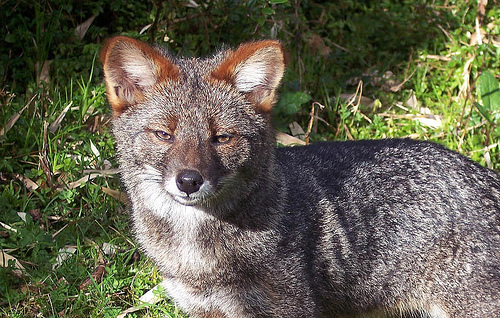In Europe, foxes have a reputation for cunning going back at least as far as the days of the seventh-century BCE poet Archilochus, who famously observed the fox knows many things; the hedgehog one great thing.
Not so the hapless fox encountered by Charles Darwin on 6th December 1834 on the Chiloé Archipelago:
In the evening we reached the island of San Pedro, where we found the Beagle at anchor. In doubling the point, two of the officers landed to take a round of angles with the theodolite. A fox (Canis fulvipes), of a kind said to be peculiar to the island, and very rare in it, and which is a new species, was sitting on the rocks. He was so intently absorbed in watching the work of the officers, that I was able, by quietly walking up behind, to knock him on the head with my geological hammer. This fox, more curious or more scientific, but less wise, than the generality of his brethren, is now mounted in the museum of the Zoological Society.
The species, which now has the scientific classification Lycalopex fulvipes and the highly appropriate common name Darwin’s fox, is still extremely rare, and is listed as critically endangered by the World Conservation Union.

Darwin made quite a habit of braining specimens with his geological hammer, which I got to examine at the London Natural History Museum’s wonderful Darwin exhibition several years ago. I did not notice any spots of blood.
Quiero saber si es posible conseguir algunas imágenes del ejemplar de Lycalopex fulvipes que esta en el British Museum, ya que no he podido encontrar y requero estas para un trabajo, asi tambien quisera pregunta por un texto que se llama Osgood, W. 1943. The mammals of Chile. Field Museum of Natural History, Zoology Series, 30:1-268.
saludos cordiales y muy buena pagina
edgardtecfor@gmail.com